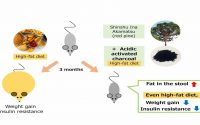Cellular secrets of ageing unlocked by researchers

New research has uncovered how genetic changes that accumulate slowly in blood stem cells throughout life are likely to be responsible for the dramatic change in blood production after the age of 70.
The study, by scientists at the Wellcome Sanger Institute, the Wellcome-MRC Cambridge Stem Cell Institute and collaborators, is published today in the journal Nature, and suggests a new theory of aging.
All human cells acquire genetic changes throughout life, known as somatic mutations. Aging is likely to be caused by the accumulation of multiple types of damage to our cells over time, with one theory being that build-up of somatic mutations causes cells to progressively lose functional reserve. However, it is currently unclear how such gradual accumulation of molecular damage could translate into the abrupt deterioration in how our organs function after the age of 70 years.
To investigate this aging process, the team from the Wellcome Sanger Institute, the Cambridge Stem Cell Institute and collaborators studied the production of blood cells from the bone marrow, analyzing 10 individuals ranging in age from new-borns to the elderly. They sequenced the whole genomes of 3,579 blood stem cells, identifying all the somatic mutations contained in each cell. The team used this to reconstruct ‘family trees’ of each person’s blood stem cells, showing, for the first time, an unbiased view of the relationships among blood cells and how these relationships change across the human lifespan.
The researchers found that these ‘family trees’ changed dramatically after the age of 70 years. The production of blood cells in adults aged under 65 came from 20,000 to 200,000 stem cells, each of which contributed in roughly equal amounts. In contrast, blood production in individuals aged over 70 was very unequal. A reduced set of expanded stem cell clones—as few as 10 to 20—contributed as much as half of all blood production in every elderly individual studied. These highly active stem cells had progressively expanded in numbers across that person’s life, caused by a rare subset of somatic mutations known as ‘driver mutations’.
These findings led the team to propose a model in which age-associated changes in blood production come from somatic mutations causing ‘selfish’ stem cells to dominate the bone marrow in the elderly. This model, with the steady introduction of driver mutations that cause the growth of functionally altered clones over decades, explains the dramatic and inevitable shift to reduced diversity of blood cell populations after the age of 70. Which clones become dominant varies from person to person, and so the model also explains the variation seen in disease risk and other characteristics in older adults. A second study, also published today in Nature, explores how different individual driver mutations affect cell growth rates over time.
Dr. Emily Mitchell, Hematology Registrar at Addenbrooke’s Hospital, Ph.D. Student at the Wellcome Sanger Institute, and lead researcher on the study, said: “Our findings show that the diversity of blood stem cells is lost in older age due to positive selection of faster growing clones with driver mutations. These clones ‘outcompete’ the slower growing ones. In many cases this increased fitness at the stem cell level likely comes at a cost—their ability to produce functional mature blood cells is impaired, so explaining the observed age-related loss of function in the blood system.”
Dr. Elisa Laurenti, Assistant Professor and Wellcome Royal Society Sir Henry Dale Fellow at the Wellcome-MRC Cambridge Stem Cell Institute at the University of Cambridge, and joint senior researcher on this study, said: “Factors such as chronic inflammation, smoking, infection and chemotherapy cause earlier growth of clones with cancer-driving mutations. We predict that these factors also bring forward the decline in blood stem cell diversity associated with aging. It is possible that there are factors that might slow this process down, too. We now have the exciting task of figuring out how these newly discovered mutations affect blood function in the elderly, so we can learn how to minimize disease risk and promote healthy aging.”
Source: Read Full Article


